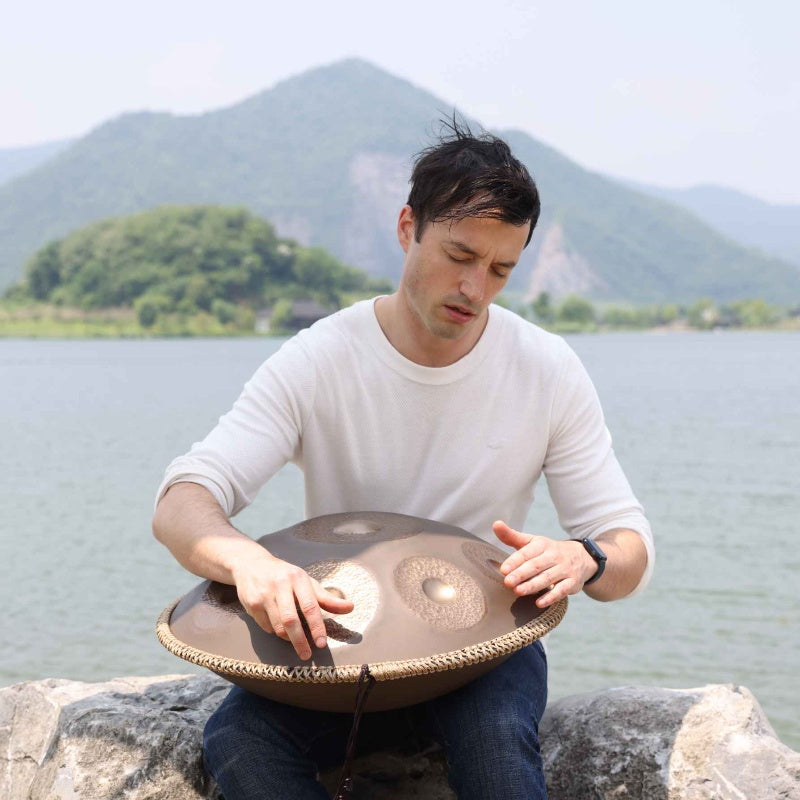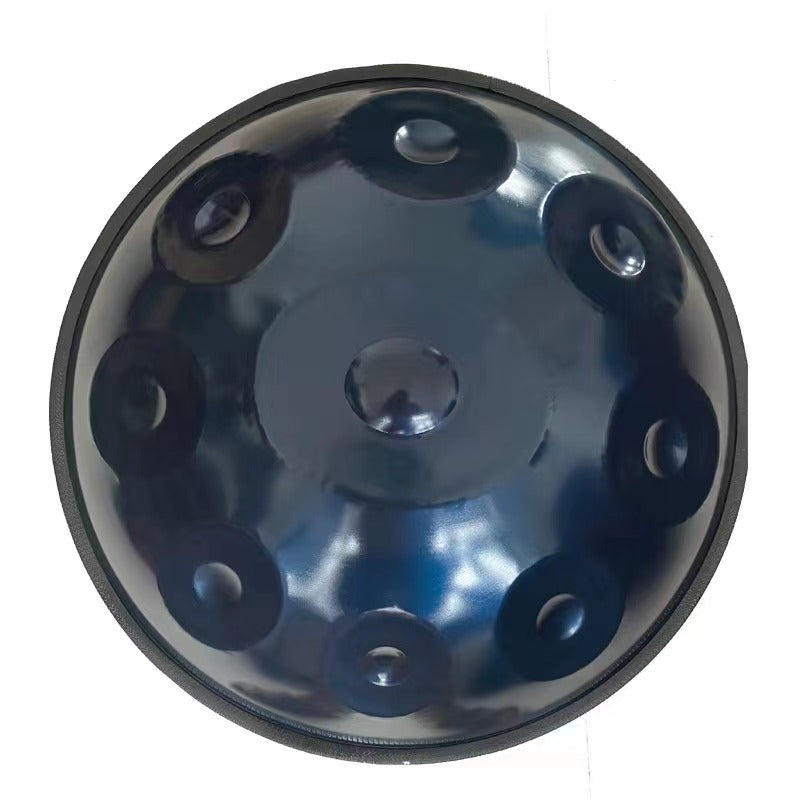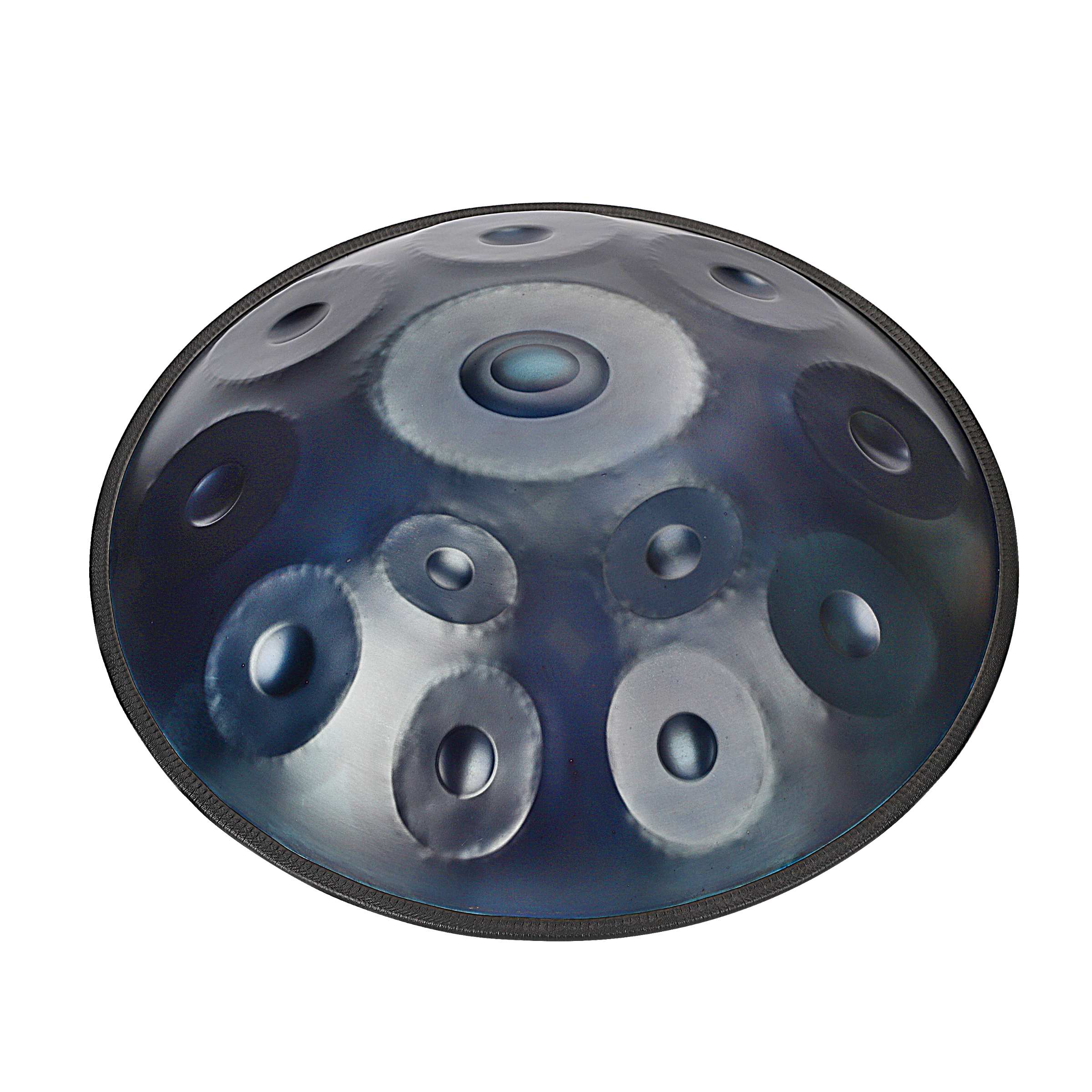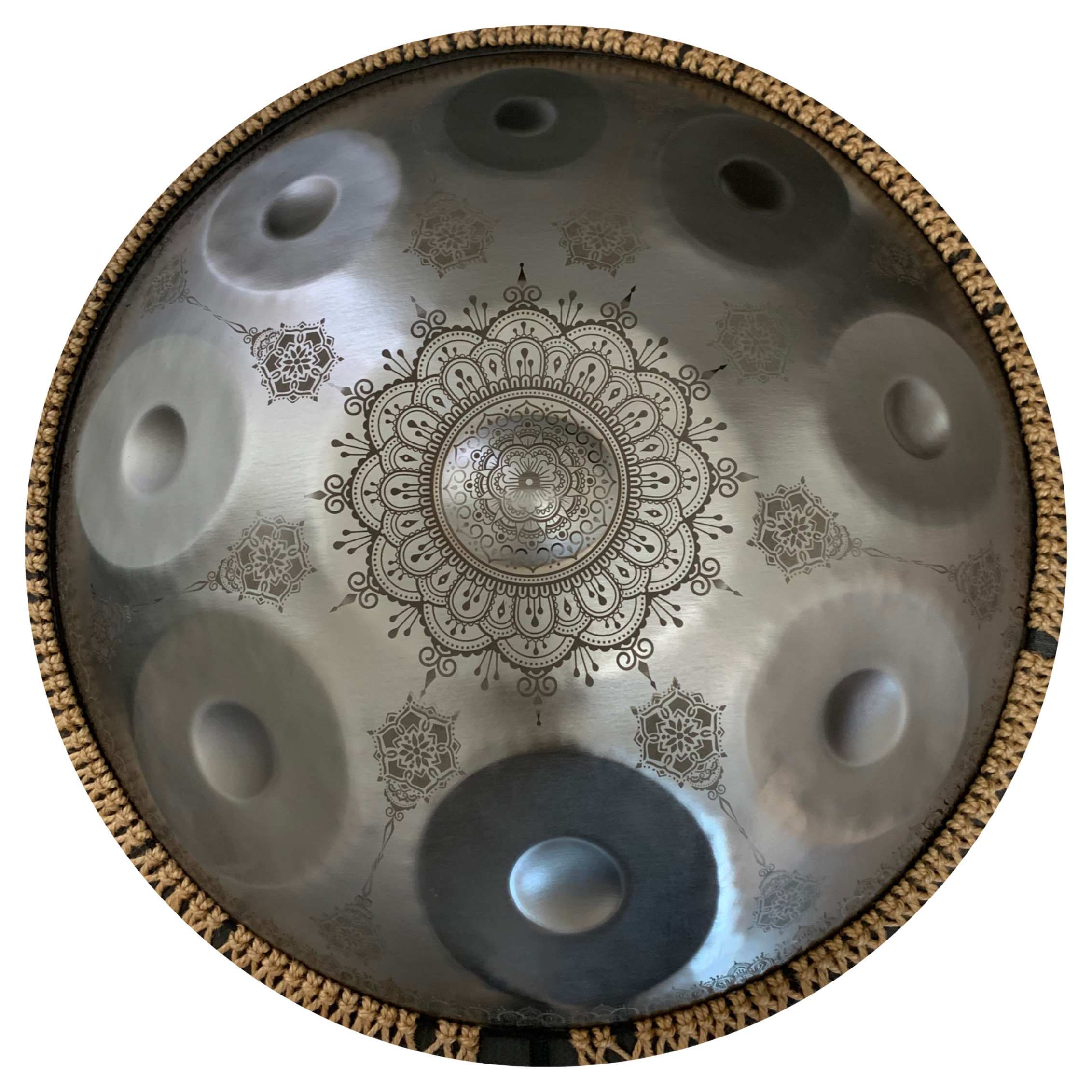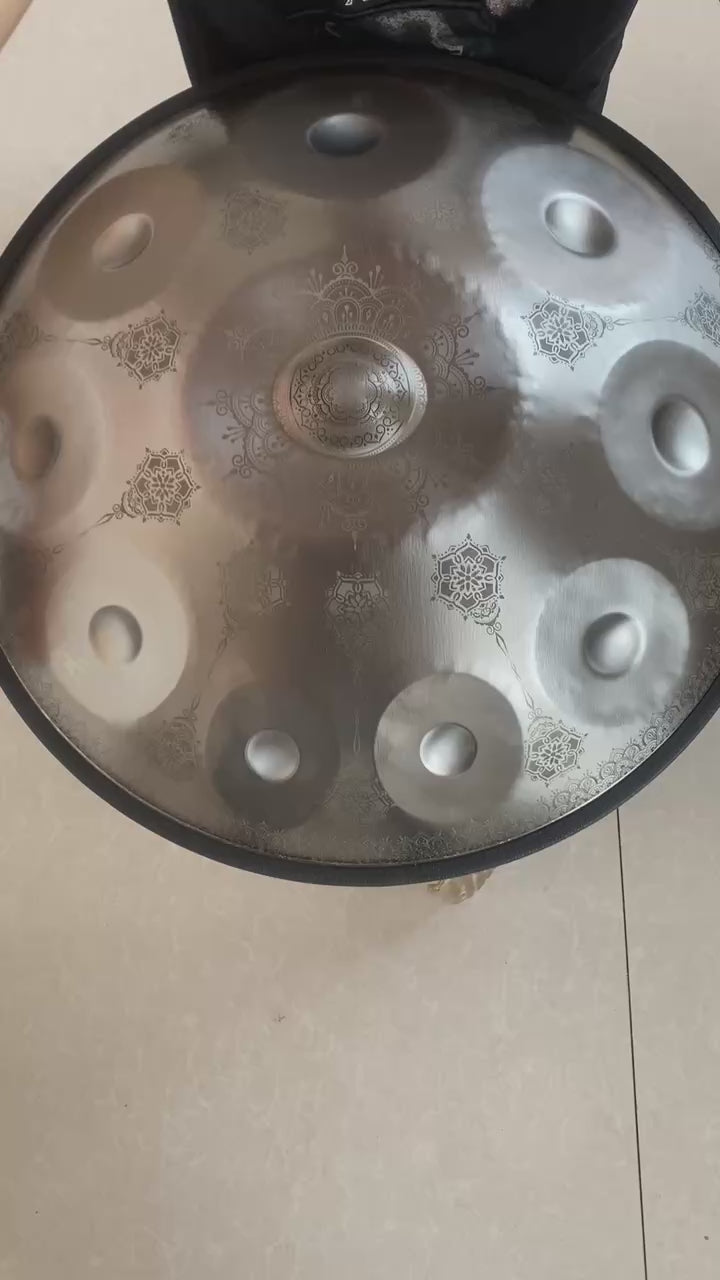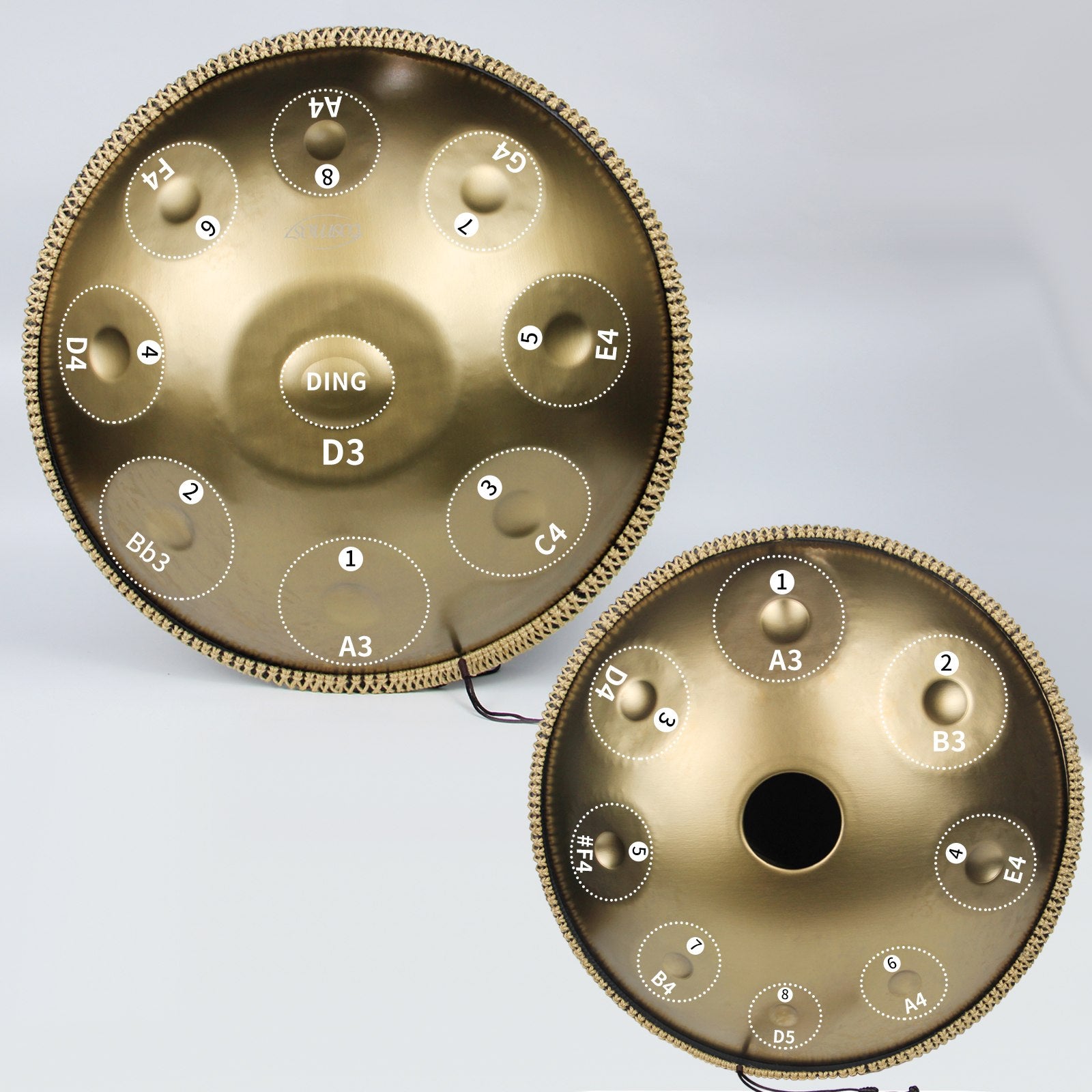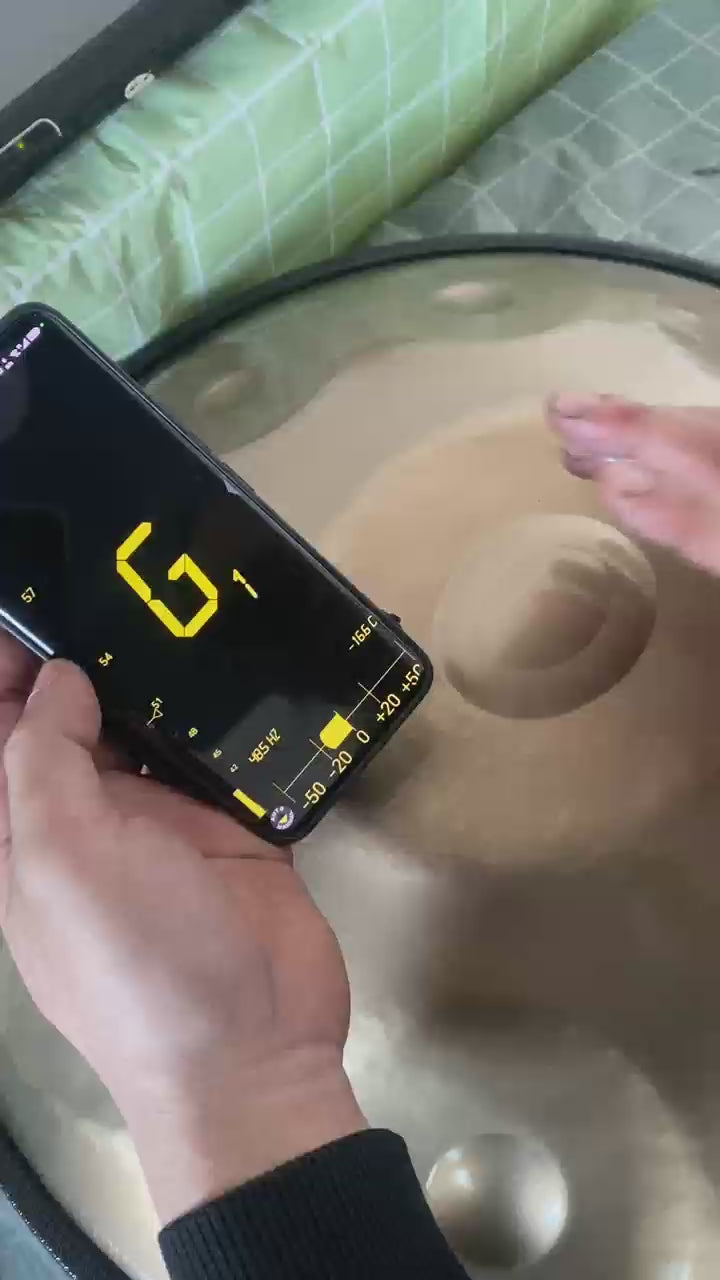
L'histoire riche derrière le handpan, également communément appelé le tambour Hang ou le Pantam, est incroyablement remplie de créativité et d'un mélange de cultures. Bien que le design de l'instrument soit encore relativement nouveau et moderne, l'instrument est apparu quelque part vers le milieu du XXe siècle. Depuis lors, l'instrument a traversé beaucoup de temps pour en arriver là.
Ces dernières années, le handpan a considérablement gagné en popularité, captivant tout le monde avec son son enchanteur et harmonieux. Son style de jeu a un effet sur les gens qui réduit le stress et apaise l'âme. Il est juste de se demander d'où vient cet instrument. Dans cet article, nous allons plonger plus profondément dans les origines du handpan et son histoire riche. Alors, entrons dans le vif du sujet !
Histoire du Hand Pan, Hang Drum et Pantam
Vous êtes-vous déjà demandé si deux feuilles d'acier convexe collées ensemble peuvent produire un son si éthéré qu'il captive les auditeurs ? C'est ainsi que les handpans ou les hang drums sont nés. En 1976, deux fabricants de steel pan, Felix Rohner et Sabina Schärer, ont travaillé chez panART en Suisse. Ils fabriquaient des instruments et les fournissaient à des groupes à l'échelle nationale dans les années 80 et 90.
Felix et Sabina ont continué à expérimenter avec les sons des tambours en acier, et avec l'aide d'un percussionniste, Robert Weber, ils ont inventé un ‘mother Hang’ pour tous les amateurs de musique en 1990. Il est maintenant appelé un tambour Hang, où le mot Hang provient du mot allemand bernois utilisé pour ‘Main.’ Bien que PANart méprise fortement ce terme, les gens l'utilisent encore couramment.
PANart Hang Production
Après de nombreux éloges, Felix et Sabina se sont concentrés sur la production de Hang Hang et ont arrêté leur travail de steel pan chez PANart. Ils ont maintenu leur attention sur les tonalités ethniques et ont présenté leur travail dans environ 45 sons apaisants. Ils avaient un design unique avec une note centrale, qu'ils appelaient un ‘Ding’, entourée de différentes notes plus petites qui peuvent être facilement jouées à la main.
En 2001, ils ont présenté leur œuvre à Musikmesse Frankfurt. Puis, en 2005, tout le monde est devenu fou lorsque plusieurs personnes ont commencé à parler du Hang sur YouTube. À mesure que sa popularité grandissait, il est devenu plus difficile pour les amateurs de musique d'acquérir l'instrument par la suite. Les acheteurs devaient attendre des mois pour obtenir des réponses à leurs lettres, puis des invitations à acheter le Hang en personne.
L'évolution des handpans
Le Hang a reçu un excellent accueil, mais les développeurs ne l'ont pas produit en masse et ont perdu son essence. Leur principal objectif était de produire un hang finement réglé, en veillant à ce que son artisanat reste intact. Cela a poussé d'autres fabricants à expérimenter avec le design original, et c'est ainsi que les handpans ont vu le jour. La demande a donné naissance à une catégorie similaire appelée handpans.
PANart a largement débattu que les Hangs diffèrent des handpans ou des tambours en acier. D'autre part, d'autres cultures ont commencé à créer leurs versions de handpans. Ils ont utilisé les techniques de réglage et les designs du Hang et ont essayé de les rendre aussi proches que possible du PANart. Bien que le Hang, le handpan et le pantam soient considérés comme identiques, ils appartiennent à différentes marques propriétaires.
Avant le PANart Hang - Histoire précoce du steel pan
L'histoire du Hang, handpan ou pantam a commencé bien avant Felix et Sabina. La fabrication d'une batterie en acier qui est née de la résilience des habitants de Trinidad et Tobago est la racine de tout cela. Dans les années 1900, les habitants ont été privés de musique en interdisant les instruments de musique. Ils se sont rebellés contre les lois et ont commencé à chercher tout ce sur quoi ils pouvaient frapper pour faire de la musique.
C'était une région avec une industrie pétrolière massive. Finalement, ils ont trouvé des fûts de pétrole à frapper et à créer différents sons mélodiques par amour de leur musique. Certaines personnes ont commencé à façonner ces fûts de pétrole en instruments. Un jeune garçon, Ellie Mannette, maintenant connu comme le père des pans en acier, a vraiment transformé ces fûts de pétrole en de magnifiques instruments de musique après des années de travail acharné.
Les rapports de fréquence des notes
Au fil des ans, l'évolution du steel pan par des légendes comme Ellie Mannette, Winston Spree Simon et Anthony Achong a été remarquable. Au début des années 1960, le réglage des octaves, ainsi que quelques notes de base, a commencé. Peu après, une autre note de fréquence, la quinte composée, a été ajoutée à la liste. C'était essentiellement le signe d'instruments de haute qualité.
Maintenant, ces rapports de fréquence 1:2:3 dans les notes de Steel Pan et de Handpan produisent une harmonie mélodieuse qui est très apaisante pour les auditeurs. Le son est entièrement dû à une onde pour le fondamental, deux pour l'octave, et trois pour la quinte composée. Plus tard dans les années 1990, des tons de shoulder ont également été introduits, ajoutant plus de profondeur au son et apportant de la magie aux oreilles !
Histoire des structures en dôme
Tout tambour, qu'il s'agisse d'un Handpan, d'un Hang ou d'un Pantum, partage des similitudes avec une steel pan. Le facteur clé qui les unit est la manière dont les designs sont connectés et la façon dont l'harmonie sonne. Les designs en forme de dôme que l'on trouve dans les gongs et les instruments de Gamelan ont été des références très pertinentes qui existent depuis des siècles et ont influencé ces instruments.
Lors de la fabrication du Hang, ces structures en dôme ont également été utilisées par PANart pour rendre leurs instruments plus raffinés et contrôlés. Elles ont donné à leurs tambours en acier et au Hang un son plus chaud, résultant d'un mélange unique d'arts anciens et d'altérations modernes. De cette manière, la nouvelle invention a préservé les traditions tout en intégrant de nouvelles innovations, créant une combinaison emblématique.
D'où viennent les noms « Handpan », « Pantam » et « Ufo Drum » ?
Poêle à main
Après la création du Hang par PANart, différents fabricants ont commencé à reproduire le design. Alors que de plus en plus de constructeurs essayaient de fabriquer des instruments similaires, PANart ne voulait pas que leur nom unique soit utilisé par d'autres. Pour éviter que le nom de marque Hang ne soit copié, Kyle Cox a inventé le terme Handpan, combinant pan du steel pan et hand car c'est ainsi qu'il est joué.
Au verset
Un distributeur israélien a décrit le Hang en utilisant le terme Pantam. C'était une combinaison du steel pan et du Ghatam. Le Ghatam est un tambour en pot en argile qui provient du sud de l'Inde. Ce terme est devenu populaire lorsque le fondateur de SPB, Victor Levinson, a commencé à l'utiliser pour montrer son travail. Bien que le Pantam ait un public fidèle, les handpans et les tambours hang sont couramment utilisés.
Tambour OVNI
Ce terme a une histoire plutôt drôle qui y est attachée. Il est apparu lorsque des gens sur Internet essayaient de découvrir à quoi ressemblait l'instrument dont tout le monde parlait. Eh bien, il ressemble à un objet volant venu de l'espace ; d'où le surnom de tambour UFO qui a été établi. Peu de gens utilisent ce terme, mais il évoque une description unique en raison de son design distinct.
Pourquoi les handpans, pantams et hang drums sont-ils appelés « tambours » ?
Si vous voulez rechercher le « Hang » et le taper en ligne, nous sommes sûrs que vous trouverez plusieurs résultats divers. C'est ainsi que le terme Hang drums ou handpan pan drum est né. Ce n'est pas ce qu'ils sont appelés, mais pour donner un contexte à la recherche, les gens l'ont regardé en ligne, et tout le monde a commencé à les appeler des tambours. C'est la raison pour laquelle tous ces instruments sont communément appelés tambours.
La plupart des musiciens combinent différentes techniques de jeu du tabla et des percussions et les jouent sur des handpans. De cette manière, les joueurs appellent couramment ces instruments des percussions au lieu d'utiliser des termes complexes comme idiophone et membranophone. Même si ce ne sont pas des termes techniquement robustes, ils facilitent la compréhension de ce à quoi vous faites référence.
Que rechercher lors de l'achat de handpans ?
Vous devez d'abord faire des recherches si vous cherchez un handpan à vendre. Il existe plusieurs vendeurs en ligne sur diverses plateformes qui vendent des instruments de mauvaise qualité. L'accord correct de ces tambours est extrêmement important pour produire une harmonie apaisante. Comme les handpans sont fabriqués à la main, leur qualité peut varier. Il est crucial de rechercher des avis sur les fabricants pour choisir le bon.
Le parcours des artisans est très significatif. Bien qu'ils puissent facturer un prix plus élevé, obtenir un instrument bon marché à un prix inférieur compromettra la musique que vous essayez de produire. Même si vous avez besoin d'un handpan pour débutants, il est essentiel de choisir le bon instrument car cela établira la base de votre parcours musical et aidera à long terme à produire une musique magique.
Conclusion
Les handpans, les hang drums et un pantam proviennent tous des tambours en acier. Ces instruments ont de la magie en eux, qui peut se manifester à travers leur harmonie mélodieuse. Que vous soyez un musicien à la recherche d'un handpan à vendre ou que vous ayez le meilleur qui soit, l'histoire qui relie l'origine de ces instruments produit la magie derrière la musique et la paix qu'elle apporte !

